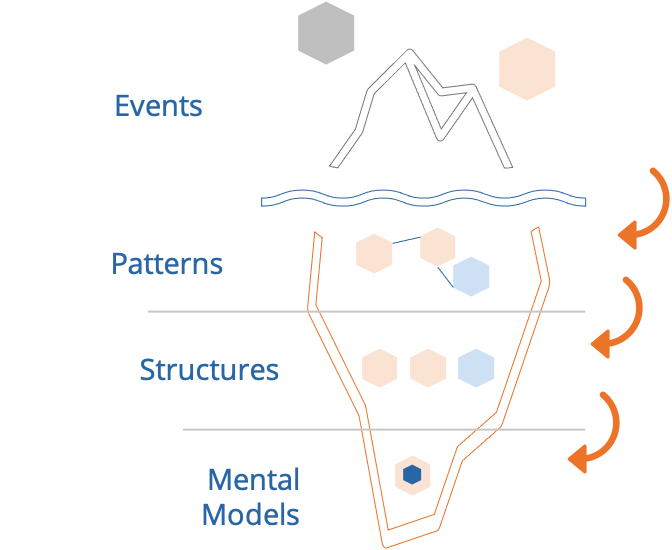
Iceberg Model: Approach to Identifying the Root Causes of Problems
Procedure for the iceberg model
- You take a look behind each event (first level) to identify possible trends that have formed over time.
- The trends form so-called patterns (second level) and provide an answer to the question “What can be observed over time?”.
- These patterns are usually triggered by systematic structures in the organization or the process flows (third level).
- In the last step, the mental ways of thinking (fourth stage) of the acting persons or decision-makers underlying the systematic structures are of interest. In this way, concrete solutions can be found that target the actual triggers of the problems (“why is it happening?”).
description
The principle of the Eisberg model / Iceberg Models is based on four levels of analysis:
- The top level represents the tip of the iceberg that can be seen and easily recognized. They represent the visible events.
- The remaining three levels – structure, pattern and mental model – are found below the surface and must be examined step by step.
Developed by: Ed Cunliff
Thematic classification
Method for sustainable problem solving.
Who benefits from this method?
- Organizations
- Business units
- Corporations
- Departments
- Project management
- Project teams
Practical tips for the iceberg model
- Use the creativity methods of the ConWISE platform.
- Invite other people outside of your core team to individual drafts. In this way, the actual strategy development remains within your team, but you benefit from additional hints and information from third parties.
- Use management methods such as “six thinking hats” to include different perspectives on the strategy.
- Top management representatives should be involved in the creation of the company guidelines (vision, mission and company values).
- Think early on how you can communicate the results of the strategy development in your organization.
- Ensure that top management shares and supports the results.
Limits of Application
Working with the iceberg model requires some effort in terms of research and intensive inquiries. Especially when it comes to the mental models.

